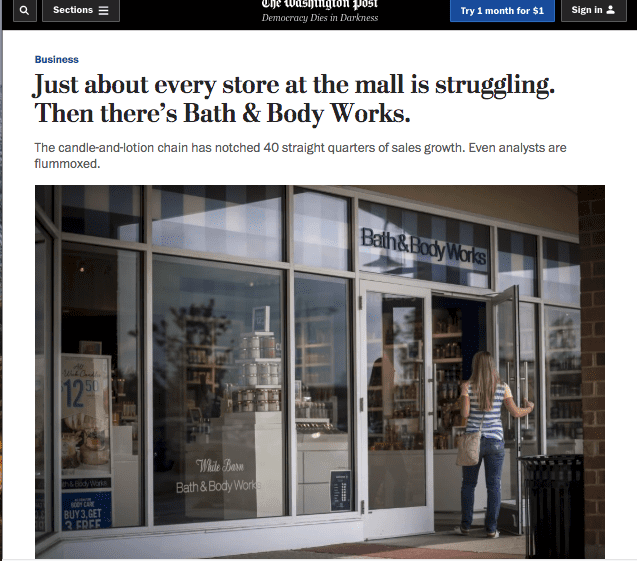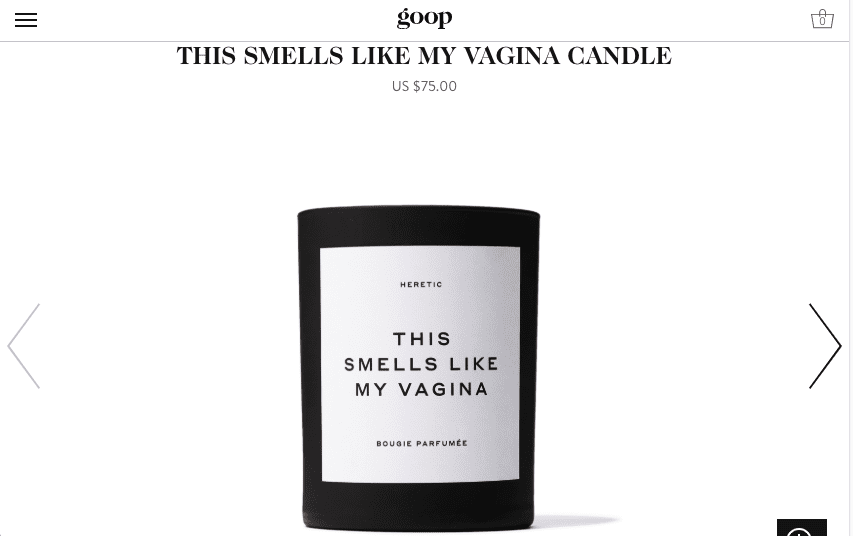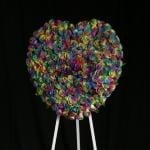
The Washington Post recently pointed to Bath & Body Works as proof of the enduring popularity of candles (and other scented wellness goods). The longtime company has posted 40 straight quarters of growth
Gwyneth Paltrow recently made news after her website GOOP sold out of a provocatively named candle. Turns out the actor-turned-mogul/influencer isn’t alone in finding success in candle sales — and there may be some lessons from recent trends for florists.
The Washington Post pointed to Bath & Body Works as proof of the enduring popularity of candles (and other scented wellness goods). The longtime company has posted 40 straight quarters of sales growth even as other brick and mortar stores have shut down — a reality that surprises many analysts.
“It truly is a head-scratcher,” Sucharita Kodali, a Forrester analyst, told the Post. “There are so many things going against this company: It’s a mall merchant — that, alone, should have spelled doom. And it’s selling commodities that are broadly available elsewhere, often for cheaper. But somehow Bath & Body Works has figured out how to appeal to the masses.”
The ease of candles and their affordable luxury appeal might hold some of the answer to the company’s staying power, said Derek Woodruff, AAF, AIFD, PFCI, of Floral Underground in Traverse City, Michigan.
“I usually only sell candles for weddings and events,” he said. “ I have found that it is good to share a pop-up shop with someone who does sell candles, as they are a great gift and impulse buy.”

The website GOOP recently sold out of this provocatively named candle. GOOP’s founder Gwyneth Paltrow scored plenty of press coverage, too, for the unexpected item.
While there are lower-cost options on the market, including trendy lines from big box stores, “for really nice candles, will drop some money,” Woodruff said, noting that candles often have a high perceived value in people’s minds because they last a relatively long time. “I guess you could relate it to a younger millennial or Gen Z buying a plant instead of a flower. The luxury lasts longer.”
In San Diego, Sam Bowles of Allen’s Flowers said candles with a local tie are especially popular right now. Such lines, he said, can give florists a leg up over all the competition in the candle market and provide a personalized touch that consumers crave.
“We’ve had the most success with locally themed candles, especially online,” Bowles said, adding that the shop also carries local chocolates and other gift items. “We carry one that says, “I sunshine SD” and people love to send that one.”
Also big at Allen’s? Candles with a story rooted in sustainability.
“I’ve definitely seen in the candle space that ingredients matter to people,” Bowles said. “They’re willing to pay more for 100 percent soy, made with essential oils, locally-made, etc. regardless of the scents.”
The success of a company like Bath & Body Works may underscore a general interest in wellness and self-care; the Danish idea of “hygge”— roughly translated as “coziness,” and all the accoutrements, often candles and soft textiles, that create that sense of coziness — has led to books, lifestyle blogs and countless articles.
Candlemakers are in addition branching into new areas — and seeing novel entrants in the market.
In April 2019, Refinery 29 declared “cannabis the next big thing in candles” and recommended half a dozen new candle companies and scents with combinations like “cannabis and brushed suede, hints of tulip, purple cassis, white musk and amber.”
Those “muddy,” natural scents seem to run parallel with consumer desire for more natural and organic looks and colors overall, including in home décor.
“I see people interested in new and different and more organic scents, rather than the traditionally flowery scents that can smell like a funeral home in my opinion,” Bowles said. “ has to be related to the design trends towards natural, local and more organic as well.
Some of the new candles are pretty out there. Paltrow’s headline-generating candle, labeled “This Smells Like My Vagina,” is described as a “gorgeous, sexy and beautifully unexpected scent” made with “geranium, citrusy bergamot, and cedar absolutes juxtaposed with Damask rose and ambrette seed.”
At press time, the GOOP candle was sold out.
Mary Westbrook is the editor in chief of Floral Management magazine.



